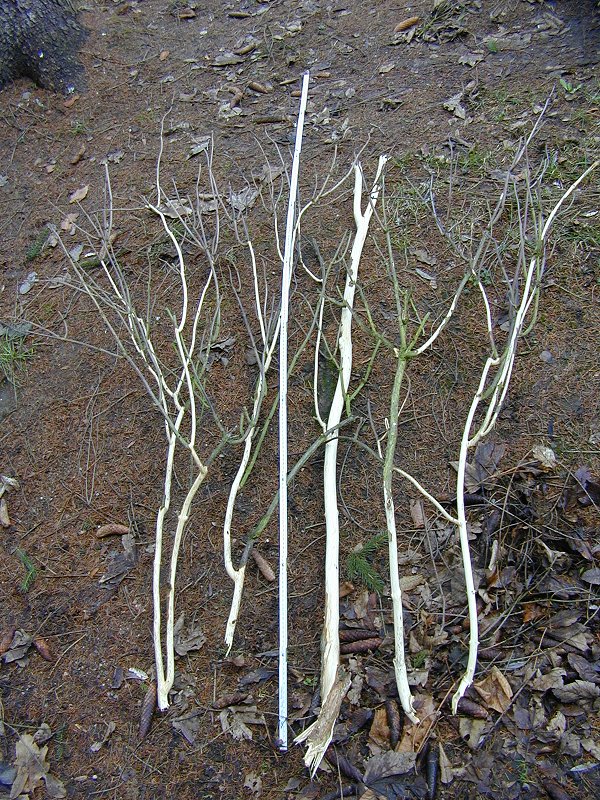|
Toll's Meadow, Wymondham
Toll's Meadow, Wymondham is a Local Nature Reserve in Wymondham in Norfolk. It is owned by Wymondham Town Council and managed by Wymondham Town Council and Norfolk County Council. The River Tiffey runs through this site, which has wet meadow and woodland. There is a variety of small birds and mammals include muntjac Muntjacs ( ), also known as the barking deer or rib-faced deer, (URL is Google Books) are small deer of the genus ''Muntiacus'' native to South Asia and Southeast Asia. Muntjacs are thought to have begun appearing 15–35 million years ago, ... and roe deer, bank voles and common shrews. There is access from Cemetery Lane and from London Road. References {{Local Nature Reserves in Norfolk Local Nature Reserves in Norfolk ... [...More Info...] [...Related Items...] OR: [Wikipedia] [Google] [Baidu] |
Wymondham
Wymondham ( ) is a market town and civil parishes in England, civil parish in the South Norfolk district of Norfolk, England. It lies on the River Tiffey, south-west of Norwich and just off the A11 road (England), A11 road to London. The parish, one of Norfolk's largest, includes rural areas to the north and south, with hamlets of Suton, Silfield, Spooner Row and Wattlefield. It had a population of 14,405 in 2011, of whom 13,587 lived in the town itself. Development The community developed during the Anglo-Saxon settlement of Britain, Anglo-Saxon period and expanded with the establishment of a Wymondham Abbey, priory in 1107 and a market in 1204. Industrially, Wymondham became known as a centre of woodturning and brush-making, retaining its brush factories until the late 20th century. New housing to the north and east of the town centre brought rapid expansion. Dual carriageways for the A11 and the development of rapid rail links to Norwich and Cambridge means Wymondham is no ... [...More Info...] [...Related Items...] OR: [Wikipedia] [Google] [Baidu] |
Norfolk
Norfolk ( ) is a Ceremonial counties of England, ceremonial county in England, located in East Anglia and officially part of the East of England region. It borders Lincolnshire and The Wash to the north-west, the North Sea to the north and east, Cambridgeshire to the west, and Suffolk to the south. The largest settlement is the city of Norwich. The county has an area of and a population of 859,400. It is largely rural with few large towns: after Norwich (147,895), the largest settlements are King's Lynn (42,800) in the north-west, Great Yarmouth (38,693) in the east, and Thetford (24,340) in the south. For local government purposes Norfolk is a non-metropolitan county with seven districts. The centre of Norfolk is gently undulating lowland. To the east are the Broads, a network of rivers and lakes which extend into Suffolk and which are protected by the Broads Authority, which give them a similar status to a National parks of England and Wales, national park. To the west the ... [...More Info...] [...Related Items...] OR: [Wikipedia] [Google] [Baidu] |
Norfolk County Council
Norfolk County Council is the upper-tier Local government in England, local authority for Norfolk, England. Below it there are seven second-tier district councils: Breckland District, Breckland, Broadland, Borough of Great Yarmouth, Great Yarmouth, North Norfolk, Norwich, King's Lynn and West Norfolk, and South Norfolk. The council has been under Conservative Party (UK), Conservative majority control since 2017. It is based at County Hall, Norwich. History Elected county councils were created in 1889 under the Local Government Act 1888, taking over many administrative functions that had previously been performed by unelected magistrates at the quarter sessions. The boroughs of Norwich and Great Yarmouth were both considered large enough to provide their own county-level services, so they became county boroughs, independent from the county council. The county council was elected by and provided services to the remainder of the county outside those two boroughs, which area was te ... [...More Info...] [...Related Items...] OR: [Wikipedia] [Google] [Baidu] |
River Tiffey
The River Tiffey is a small river in Norfolk, England and a tributary of the River Yare. It rises near Hethel and passes through Wymondham before flowing generally north-eastwards passing through Kimberley, Carleton Forehoe, Wramplingham Wramplingham is a village and civil parish in the English county of Norfolk. It is situated on the River Tiffey some north of Wymondham and west of Norwich. The civil parish has an area of 3.47 square kilometres and in 2001 had a population ... and Barford where the Tiffey joins the River Yare. Further reading *''History Along the Tiffey'' (2007) by Anne & Adrian Hoare External links *Tiffey Valley circular walk Tiffey 1Tiffey {{Engla ... [...More Info...] [...Related Items...] OR: [Wikipedia] [Google] [Baidu] |
Wet Meadow
A wet meadow is a type of wetland with soils that are Solubility, saturated for part or all of the growing season which prevents the growth of trees and brush. Debate exists whether a wet meadow is a type of marsh or a completely separate type of wetland. Wet prairies and wet savannas are hydrologically similar. Hydrology and ecology Wet meadows may occur because of restricted drainage or the receipt of large amounts of water from rain or melted snow. They may also occur in riparian zones and around the shores of large lakes. Unlike a marsh or swamp, a wet meadow does not have standing water present except for brief to moderate periods during the growing season. Instead, the ground in a wet meadow fluctuates between brief periods of Flood, inundation and longer periods of Hydric soil, saturation. Wet meadows often have large numbers of wetland plant species, which frequently survive as buried seeds during dry periods, and then regenerate after flooding. Wet meadows therefore do ... [...More Info...] [...Related Items...] OR: [Wikipedia] [Google] [Baidu] |
Muntjac
Muntjacs ( ), also known as the barking deer or rib-faced deer, (URL is Google Books) are small deer of the genus ''Muntiacus'' native to South Asia and Southeast Asia. Muntjacs are thought to have begun appearing 15–35 million years ago, with remains found in Miocene deposits in France, Germany and Poland. Most are listed as least-concern species or Data Deficient by the International Union for Conservation of Nature (IUCN), although others such as the black muntjac, Bornean yellow muntjac, and giant muntjac are Vulnerable species, vulnerable, Near-threatened species, near threatened, and critically endangered, respectively. Name The present name is a borrowing of the latinisation of names, Latinized form of the Dutch language, Dutch , which was borrowed from the Sundanese language, Sundanese ''mencek'' (). The Latin form first appeared as in E.A.W. von Zimmerman, Zimmerman in 1780. An erroneous alternative name of ''Mastreani deer'' has its origins in a Vandalism on Wik ... [...More Info...] [...Related Items...] OR: [Wikipedia] [Google] [Baidu] |
Bank Vole
The bank vole (''Clethrionomys glareolus'') is a small vole with red-brown fur and some grey patches, with a tail about half as long as its body. A rodent, it lives in woodland areas and is around in length. The bank vole is found in much of Europe and in northwestern Asia. It is native to Great Britain but not to Ireland, where it has been accidentally introduced, and has now colonised much of the south and southwest. The bank vole lives in woodland, hedgerows and other dense vegetation, such as bracken and bramble. Its underground chamber is lined with moss, feathers and vegetable fibre and contains a store of food. It can live for eighteen months to two years in the wild and over 42 months in captivity and is mostly herbivorous, eating buds, bark, seeds, nuts, leaves and fruits and occasionally insects and other small invertebrates. It readily climbs into scrub and low branches of trees although it is not as versatile as a mouse. It breeds in shallow burrows, the female reari ... [...More Info...] [...Related Items...] OR: [Wikipedia] [Google] [Baidu] |
Common Shrew
The common shrew (''Sorex araneus''), also known as the Eurasian shrew, is the most common shrew, and one of the most common mammals, throughout Northern Europe, including Great Britain, but excluding Ireland. It is long and weighs , and has velvety dark brown fur with a pale underside. It is one of the rare venomous mammals. Juvenile shrews have lighter fur until their first moult. The common shrew has small eyes, a pointed, mobile snout and red-tipped teeth. It has a life span of approximately 14 months. Shrews are active day and night, taking short periods of rest between relatively long bursts of activity. Territory Common shrews are found throughout the woodlands, grasslands, and hedgelands of Britain, Scandinavia, and Eastern Europe. Each shrew establishes a home range of 370 to 630 m2 (440 to 750 yd²). Males often extend the boundaries during the breeding season to find females. Shrews are extremely territorial and will aggressively defend their home ranges from othe ... [...More Info...] [...Related Items...] OR: [Wikipedia] [Google] [Baidu] |




